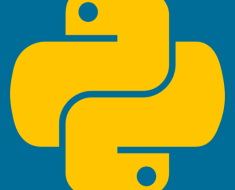This document serves as an essential guide for Independent Software Vendors (ISVs) to navigate the complexities of cost management associated with Azure Cognitive Services, focusing on Azure OpenAI and Azure Machine Learning. It adopts a structured approach, examining costs across different project phases—Development, Testing, and Production—to provide a comprehensive view of financial implications at each stage. More than just listing prices, this research explains them, linking to official Azure documentation for accuracy, and offering practical tips and strategies for cost optimization. It’s crafted to assist both developers and CTOs in making informed decisions, balancing technological innovation with budget constraints. This is your go-to resource for understanding and managing the costs of Azure’s advanced cognitive services.
Read on for a detailed exploration of Azure Cognitive Services costs and how to smartly navigate them.
Introduction
Azure OpenAI Pricing
Azure OpenAI charges are primarily based on token usage, with variations depending on the model and service used. A token is roughly equivalent to 4 characters or ¾ of a word, meaning 1,000 tokens represent approximately 750 words. This token-based billing applies to both the input (prompt) and output (response) of the models.
Language Models
- Models: GPT-3.5-Turbo 4K, GPT-3.5-Turbo 16K, GPT-4 8K, GPT-4 32K.
- Charging Mechanism: Per 1,000 tokens.
Base Models
- Models: Babbage-002, Davinci-002.
- Charging Mechanism: Per 1,000 tokens.
Fine-tuning Models
In Azure OpenAI, fine-tuning allows customers to tailor models (such as Babbage-002, Davinci-002, GPT-3.5-Turbo) to their specific needs by training them on a custom dataset. The cost structure for fine-tuning models is multi-faceted:
- Models: Babbage-002, Davinci-002, GPT-3.5-Turbo.
- Charging Mechanism: Costs are incurred in three main areas:
- Training: Billed per compute hour during the training of the model on custom data.
- Hosting: Charged per hour for hosting the fine-tuned model. It’s important to note that hosting costs accrue continuously, regardless of whether the model is actively processing requests or not. This can result in significant expenses, especially if the model is hosted but not used frequently.
- Token Usage: Billed per 1,000 tokens for both input and output. This is similar to other Azure OpenAI services.
A critical aspect to consider with fine-tuning models is the hosting cost. Even if there are no calls to the model, the hosting charges continue, which can add up quickly. Additionally, deploying a fine-tuned model often requires a minimum number of nodes, leading to a baseline cost that is incurred regardless of usage intensity. This aspect makes it crucial for customers to carefully plan and manage their usage, ensuring that the model is hosted only when necessary and is optimally scaled according to the demand.
Image and Embedding Models
- Dall-E and Ada: Charged per 100 images or 1,000 tokens respectively.
Speech Models
- Whisper: Charged per hour, irrespective of audio length processed.
For detailed pricing information, visit the Azure OpenAI Service Pricing (Opens in new window or tab) page.
Azure Machine Learning Pricing: General Costs
Services
- Azure Container Registry: Manages and stores private Docker container images.
- Block Blob Storage: Stores large amounts of unstructured data, such as datasets.
- Key Vault: Securely stores and accesses secrets like keys and tokens.
- Application Insights: Provides analytics and telemetry for application performance monitoring.
Compute Instances
- Purpose: Tailored for development and testing in Azure Machine Learning.
- Billing: Charged for the duration the VM is running. Can be started and stopped as needed.
- Specialization: Designed specifically for machine learning workloads and integrated into the AML workspace.
VMs and Other Resources
General-Purpose VMs
- Billing: Charged on an hourly basis. Billing is continuous as long as the VM is operational, irrespective of the level of activity or workload running on it.
- Usage: Essential for running machine learning models, training algorithms, or hosting applications. The choice of VM size and capacity should align with the computational needs of the specific machine learning tasks to optimize cost-efficiency.
Load Balancers
- Billing: Load Balancers in Azure are typically billed based on the number of configured rules and the amount of data processed. The first five rules are charged at a fixed rate per hour, with additional rules incurring extra charges. Note that a partial hour of usage is billed as a full hour.
- Function: Crucial for distributing incoming network traffic across multiple servers or VMs. This ensures high availability and reliability by spreading the load, which is particularly important in scenarios where machine learning applications require high uptime and consistent performance.
- Data Processing Charges: The cost also includes the amount of data processed, both inbound and outbound, which is an important factor to consider for machine learning applications that may process large volumes of data.
For more detailed and up-to-date pricing information, refer to the Azure Load Balancer Pricing (Opens in new window or tab) page.
Note
“Compute Instances” are specialized for machine learning tasks and are integrated into the AML workspace, billed based on usage. “VMs and Other Resources” encompass a broader range of VMs and additional services like Load Balancers, each with their specific billing models.
Cost Analysis in Development & Test Phase
Azure offers a free tier for Cognitive Services, beneficial for experimenting during the development phase (Azure Free Tier Information (Opens in new window or tab)).
Effective cost management is crucial, with tools like Azure Pricing Calculator and Azure Cost Analysis helping monitor and plan pricing needs (Cost Management Strategies (Opens in new window or tab)).
Optimizing resource usage involves strategies such as managing separate resources for individual Cognitive Services components for granular cost tracking and control (Resource Management Tips (Opens in new window or tab)).
Azure Dev Test Subscriptions offer discounted rates on services for development and testing (Azure Dev Test Subscriptions (Opens in new window or tab)).
Implementing strategies like auto shutdown/startup during off-hours and autoscaling resources based on usage patterns can lead to significant cost savings (Right Sizing and Shutdowns (Opens in new window or tab)).
In the testing phase, consider using mock data or simulations for cost-effective testing, stress testing and performance monitoring to understand service performance under different loads, and utilizing separate environments or Azure’s sandbox features to test services (Testing Strategies for Azure Services (Opens in new window or tab)).
Various payment options for VMs, such as pay-as-you-go and reserved instances, offer flexibility in managing costs to suit different workload requirements and budgets (Cost Control Options (Opens in new window or tab)).
Cost Management in Production Phase
In the production phase, ISVs can leverage insights and strategies developed in earlier phases for effective cost management:
-
Leverage Forecasting Insights: Utilize usage forecasts developed during the development and testing phases to anticipate and plan for scaling needs and associated costs.
-
Optimize Based on Testing Data: Apply performance and cost optimization strategies identified during testing to enhance efficiency in the production environment.
-
Continuous Monitoring and Adjustment: Implement ongoing cost monitoring and optimization strategies, using tools such as Azure Cost Management, to adjust resources and strategies in response to actual usage and performance data.
-
Utilize Azure Reserved Instances: For predictable and steady workloads identified through earlier analysis, consider Azure Reserved Instances for cost savings.
-
Implement Cost Allocation and Tagging: Extend cost allocation and tagging practices from earlier phases to maintain granular control over expenses and facilitate detailed reporting in production.
These strategies help in transitioning smoothly from development and testing to a cost-effective production environment.
Conclusion
Summary of Findings
This analysis simplifies the costs of Azure Cognitive Services and Azure Machine Learning, offering ISVs a clear guide to manage these services’ financial aspects. Key findings are:
- Cost Structures Across Phases: The document elaborates on the different cost structures during Development, Testing, and Production phases, offering a thorough understanding of financial implications at each stage.
- Target Audience: Specifically designed for ISVs, including developers and Chief Technology Officers (CTOs), the guide offers deep insights into Azure OpenAI and Azure Machine Learning’s pricing models and cost calculation methods.
- Practical and Actionable Insights: Beyond presenting raw pricing details, the document interprets and explains these aspects, thus providing ISVs with actionable insights for effective budgeting and cost planning.
- Importance of Cost Management: It underscores the significance of cost management for ISVs, especially in balancing the use of innovative technologies like Azure Cognitive Services with budget limitations.
Final Recommendations
Based on the findings, the following recommendations are made to ISVs:
- Informed Decision-Making: Utilize the insights provided in this guide to make informed decisions about investments in Azure Cognitive Services and Azure Machine Learning. Understanding the nuances of cost calculations and pricing models is crucial for effective financial planning.
- Optimization Strategies: Implement the cost optimization strategies outlined in this document. This includes leveraging Azure’s pricing calculator, employing cost management tools, and optimizing resource usage based on the project phase.
- Balancing Innovation and Cost: Maintain a balance between adopting technological innovations and adhering to budget constraints. This balance is essential for the sustainable growth and competitiveness of ISVs in the technology sector.
- Continuous Monitoring and Adjustment: Engage in ongoing monitoring and adjustment of strategies, using tools like Azure Cost Management. This will help in adapting to changing requirements and optimizing costs in real-time.
In conclusion, ISVs are encouraged to actively apply the insights and recommendations from this analysis to manage their investments in Azure services effectively, ensuring that their technological advancements are both impactful and financially viable.
References and Resources
- Azure OpenAI Service Detailed Pricing (Opens in new window or tab)
- Azure Load Balancer Pricing Information (Opens in new window or tab)
- Information on Azure Free Tier (Opens in new window or tab)
- Strategies for Managing Azure Cognitive Services Costs (Opens in new window or tab)
- Tips for Managing Resources in Azure Cognitive Services (Opens in new window or tab)
- Azure Dev Test Subscriptions and Cost Savings (Opens in new window or tab)
- Guidance on Right Sizing and Shutdowns in Azure (Opens in new window or tab)
- Testing Strategies for Azure Services Documentation (Opens in new window or tab)
- Options for Cost Control in Azure Services (Opens in new window or tab)





![[2401.06081] Improving Large Language Models via Fine-grained Reinforcement Learning with Minimum Editing Constraint [2401.06081] Improving Large Language Models via Fine-grained Reinforcement Learning with Minimum Editing Constraint](https://aigumbo.com/wp-content/uploads/2023/12/arxiv-logo-fb-235x190.png)